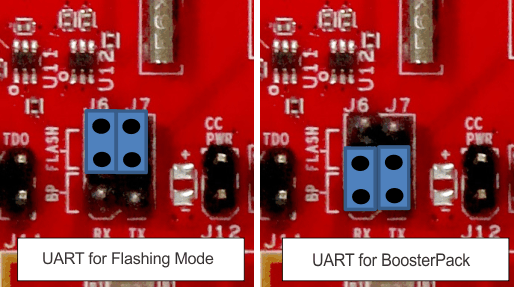SWRU372C June 2014 – March 2020 CC3200
- CC3200 SimpleLink™ Wi-Fi® and Internet of Things Solution With MCU LaunchPad™ Hardware
- Revision History
2.4.4 UART Signals
The board supports a USB-based virtual COM port, which is used on the FTDI device FT2232D. There are two ports on the FT2232: the first port is dedicated for the emulation (JTAG/SWD) and the second port is used for the virtual COM port. The UART can also be routed to the 20-pin connector and the selection is performed using jumpers on the board.
Figure 6. UART Signals

Table 5. UART Signals
| Reference | Usage | Comments |
|---|---|---|
| J6, J7 | UART for flash programming | Short 1-2: Route the signals to the 20-pin connector.
Short 2-3: Route the signals to the FTDI for flash programming. |